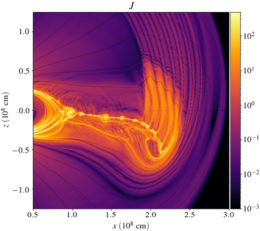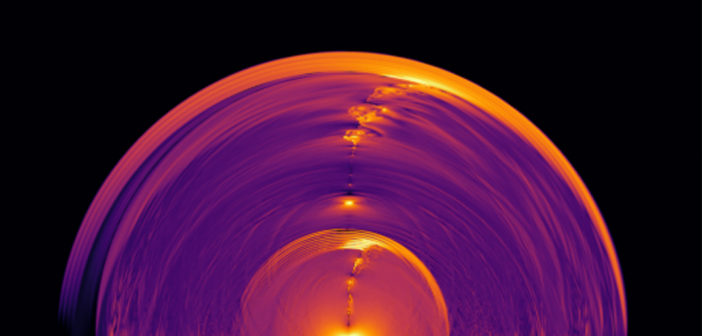How could a magnetar — a powerfully magnetized neutron star — produce the brief flashes of radio emission and X-rays we’ve recently spotted from SGR 1935+2154, the first equivalent of a fast radio burst in our own galaxy? Magnetars have crusts that can suddenly crack and shear, shaking the magnetic fields of the star in what’s known as a magnetar quake. Using numerical simulations, a team of scientists led by Yajie Yuan (CCA, Flatiron Institute) has shown that waves from a magnetar quake can propagate to the star’s magnetosphere, converting into blobs of magnetized plasma. These plasmoids accelerate outward from the star, driving blast waves into the surrounding magnetar wind that generate simultaneous X-ray and radio bursts.

A zoom-in of ejecta propagating through the magnetosphere surrounding a magnetized neutron star. [Adapted from Yuan et al. 2020]
Citation
“Plasmoid Ejection by Alfvén Waves and the Fast Radio Bursts from SGR 1935+2154,” Yajie Yuan et al 2020 ApJL 900 L21. doi:10.3847/2041-8213/abafa8
